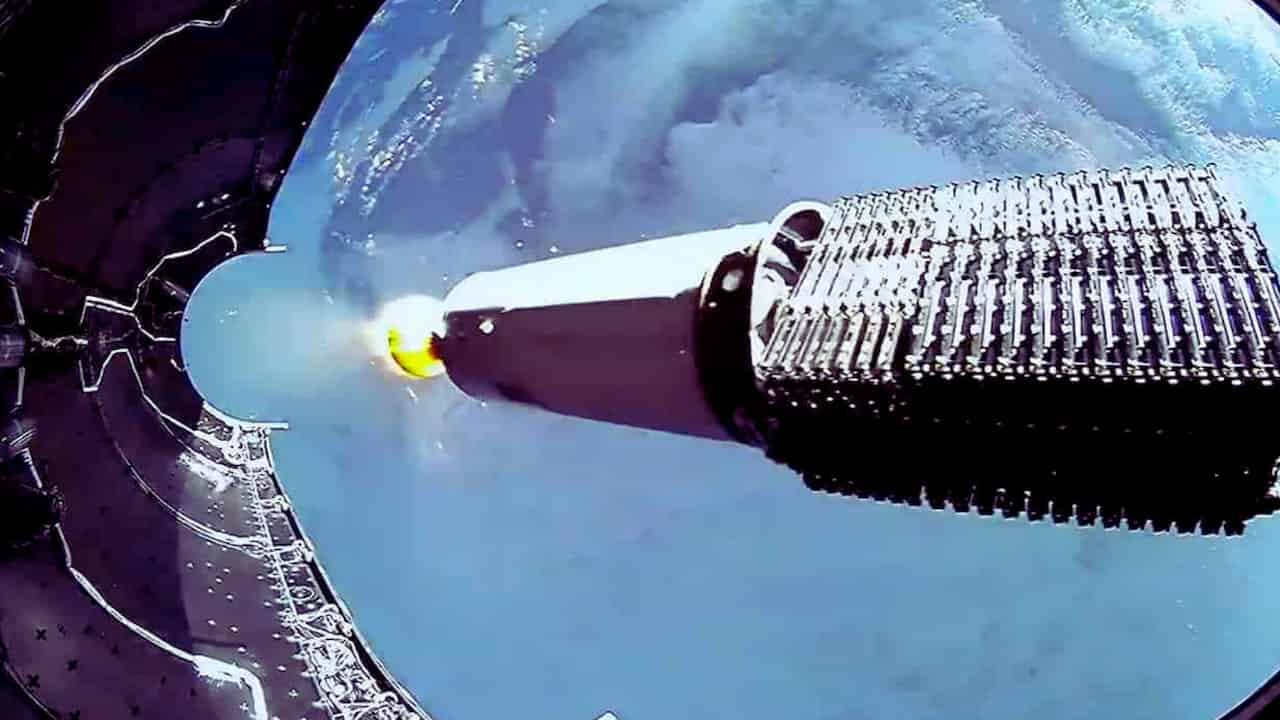SpaceX unveils breath-taking views of Starlink satellites’ journey to space.
SpaceX has released stunning new footage that gives viewers a rare glimpse of the precise moment when its internet-beaming satellites emerge from their protective shell in space.
The video, shared on Monday, captures the dramatic separation of the Falcon 9 rocket’s payload fairings, revealing a neatly stacked group of Starlink satellites ready for deployment.
“This is a remarkable achievement in spacecraft engineering and cinematography,” says Elizabeth Howell, space technology reporter. “We’re literally watching the birth of a new constellation of Internet satellites in real time.”
The video shows both the active and passive halves of the protective fairings falling away from the Falcon 9 rocket, with Earth’s curved horizon providing a spectacular backdrop. These fairings act like a nose cone, shielding the valuable satellite cargo during the crucial first few minutes of flight through Earth’s atmosphere.
Building the Internet in space
SpaceX’s ambitious Starlink project aims to revolutionize global internet access. The company plans to launch an impressive 42,000 satellites into low Earth orbit, creating a network that will bring high-speed internet to remote and underserved areas worldwide.
We are already experiencing the impact of this technology. During recent natural disasters, including the aftermath of Hurricane Helene last month, Starlink provided crucial communication links to affected areas in the American Southeast. This humanitarian application demonstrates the real-world benefits of satellite internet technology.
Current Progress:
- More than 6,400 active Starlink satellites now orbit Earth.
- The latest V2 satellites weigh approximately 1,760 pounds (800 kilograms).
- Multiple launches occur weekly.
- Satellites are designed to operate for up to five years.
Challenges and concerns
While the technology shows promise, it’s not without controversy. Astronomers have increasingly voiced concerns about Starlink’s impact on scientific research and observation. Astronomy & Astrophysics published a study on September 18 revealing that the new generation of Starlink satellites produces radio noise 32 times stronger than their predecessors.
“This increased radio emission poses significant challenges for researchers studying the early universe and the Big Bang,” explains Jonathan McDowell, an astrophysicist and satellite tracker. The bright trail of satellites, known as the “Starlink train,” remains highly visible in the night sky despite SpaceX’s efforts to darken individual units.
Looking Ahead
SpaceX continues to balance technological progress with environmental and scientific considerations. The company has demonstrated its commitment to addressing concerns by:
- Implementing satellite darkening measures
- Working with the astronomical community
- We are upholding consistent launch schedules to swap out outdated satellites.
- Providing critical internet infrastructure worldwide
The latest video release offers more than just spectacular views; it represents a milestone in space technology democratization. As SpaceX pushes forward with its ambitious plans, the company remains at the forefront of making space-based internet services a reality for users around the globe.
This launch marks another successful step in SpaceX’s mission to create a truly global internet network, even as discussions continue about the broader implications of mega-constellations in our increasingly crowded orbit.
Table of Contents
